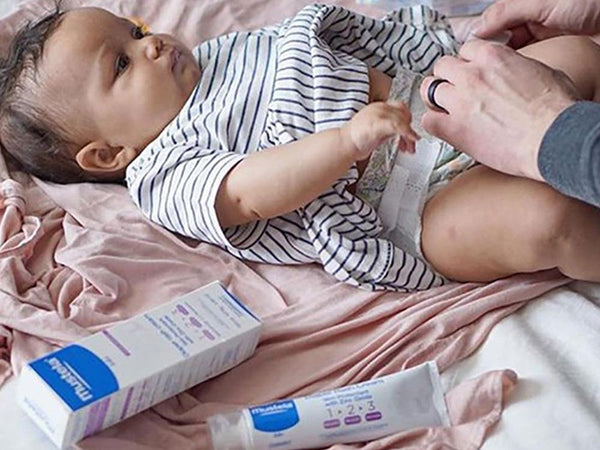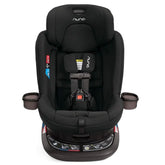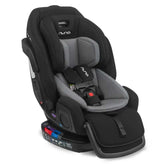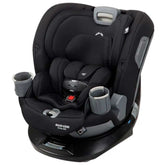12 Common Cloth Diapering Mistakes: What You Need to Know

Updated 19 Dec 2024
The fastest way to ruin a cloth diaper is by not caring for it or using it properly. Cloth diapering mistakes can cause anything from leaks and discomfort for your little one to wear and tear and ultimately less usage of the diaper. Save yourself the frustration and aggravation by learning a few of the most common cloth diapering mistakes and how to avoid them.
1. Not Prewashing
Prepping Cloth Diapers
This step allows your cloth diapers to achieve maximum absorption and reduce leakage. It also removes any dirt or germs that may be on the diapers when they arrive at your home from the warehouse. Generally speaking, all it takes is pre-washing the diapers before using them on your baby. Natural fiber diapers, such as hemp, cotton, or bamboo may require seven to ten pre-washes, whereas synthetic fibers may only need one wash.
2. Not Changing the Diaper Frequently Enough
Do You Change a Cloth Diaper After Every Pee?
Cloth diapers don’t absorb as much liquid as disposable ones. Your baby will likely feel that wetness a lot sooner as well. That tends to lead to a lot more diaper changes. Check a newborn’s cloth diaper about every hour and a half to two hours.
3. Not Rinsing Out Soiled Diapers
Getting the Poop Smell Out of Cloth Diapers
Wet diapers can be placed directly into the diaper pail, but poop diapers should be emptied into the toilet first — especially if your baby is formula-fed or on solids. The issue? The washing machine is not really designed to remove solids and all the accompanying bacteria.
Some caregivers rinse the diaper before washing it. You can give the diapers a spray with water and baking soda for better odor control. Consider adding a disposable liner to the diaper that can be tossed or flushed after use. This helps minimize the amount of poop that gets on the diaper.
Unlike other diaper liners, Tidy Tots One Size Flushies Liners snap into the cover with the diaper, so they are secure. They’re soothing and soft, made of bamboo and hemp. These liners make changing time easy - no spraying, no scraping, no ick. Simply remove and flush.

Tidy Tots One Size Flushies Liners
4. Not Using the Right Laundry Products
Why Do My Cloth Diapers Smell?
Use laundry products and detergents that are hypoallergenic or recommended for infant clothing. Even better? Use products specifically recommended by the diaper manufacturer or designated for use with cloth diapers. Avoid using fabric softener or anti-static products as these can cause rashes on a baby's sensitive skin.
The amount and type of detergent you use will impact the effectiveness of your cloth diapers. Too much detergent will create build-up and residue, and not enough will keep them from being thoroughly cleaned. Use hot water and double-rinse each wash. Always wash diapers separately from your other laundry.
5. Not Washing and Drying Diapers Properly
Is It Sanitary to Wash Cloth Diapers in the Washer? Can I Dry My Cloth Diapers in the Dryer?
Read the diaper manufacturer’s recommendations carefully for washing and drying. These can vary greatly depending on the type of fabric (synthetic or natural) the diapers are made from. They may include guidelines on the number of diapers that can be washed in a load as well as water temperature. Most manufacturer guidelines recommend line drying cloth diapers, not placing them in an electric or gas dryer. Ignoring these instructions may shorten the lifespan of your cloth diapers.
6. Not Washing Frequently Enough
Your Cloth Diaper Cleaning Routine
Waiting too long to wash a load of cloth diapers may trap stains, odor, mold, or mildew. Urine quickly disintegrates into ammonia, a particularly pungent and hard-to-remove odor. Launder cloth diapers every two to three days and follow the washing instructions provided by the manufacturer. For especially deep-set stains or odors, hang your diapers out in the sun. Sunlight works as a natural stain and bacteria combatant.
7. Having Too Few Diapers on Hand
How Many Cloth Diapers Do You Go Through In a Day?
Using cloth diapers takes a little planning and preparation. A newborn infant uses about ten to fifteen diapers in one day alone! Even if you wash a daily load, you’ll probably want to have at least 18 diapers to be safe. Most parents wash diapers every other day. Be sure to budget in time for them to line dry since most cloth diapers should not be dried in the dryer.
8. Using the Wrong Diaper Cream
Can I Use Diaper Cream With Cloth Diapers?
Diaper creams are designed to keep wetness away from your baby’s skin. The problem is that when the product gets on a cloth diaper, it prevents the diaper from effectively absorbing urine, which leads to leaky diapers. If you need to use diaper cream (because rashes do happen), avoid creams that contain petroleum or zinc oxide, and be sure to wash them thoroughly afterward.

9. Putting Microfiber Against Baby’s Skin
Can Microfiber Inserts Touch Baby's Skin?
Microfiber is amazingly absorbent and relatively inexpensive. Microfiber diaper inserts are a particularly popular solution for nighttime absorbency. The problem with this ultra-absorbent cloth is that not only will it soak up urine, but if placed directly on a baby’s skin, it can absorb their skin’s natural moisture and result in diaper rash. The safest way to use microfiber inserts is to place them inside a pocket diaper or with an additional skin-safe layer on top.
10. Using Essential Oils
Can You Use Essential Oils on Cloth Diapers?
Nobody likes a stinky diaper pail or smelly laundry, but many essential oils are just too potent for little skin. Babies and toddlers have thinner skin and less developed livers and immune systems. This makes them more vulnerable to potential toxicity associated with oil use. A few popular essential oils that should never be used around children include:
- eucalyptus
- fennel
- peppermint
- rosemary
- verbena
- wintergreen
Always consult your baby’s healthcare provider before using essential oils with or near your children.
11. Using the Wrong Size Cloth Diaper
What Size Cloth Diaper Do I Need?
Just like disposable diapers, cloth diaper sizing is based on your baby’s weight. A diaper that doesn’t fit well will not only be prone to leaks but will be irritating for your child. Try a few different sizes and types. Ask friends if you can borrow or buy a couple from them to try them out. Some parents start off with disposables until they can find a cloth diaper size and brand that works for them. Just remember that babies grow and you’ll probably need to adjust the size and fit often.
12. Being Inflexible
Are Cloth Diapers Better Than Disposables?
You don’t have to be all-in, all the time when it comes to cloth diapering. You can opt to occasionally use disposables at night or when you’re on a road trip if that’s more convenient. You can use more than one type of cloth diaper. Decide what works best for your family’s needs and lifestyle.












